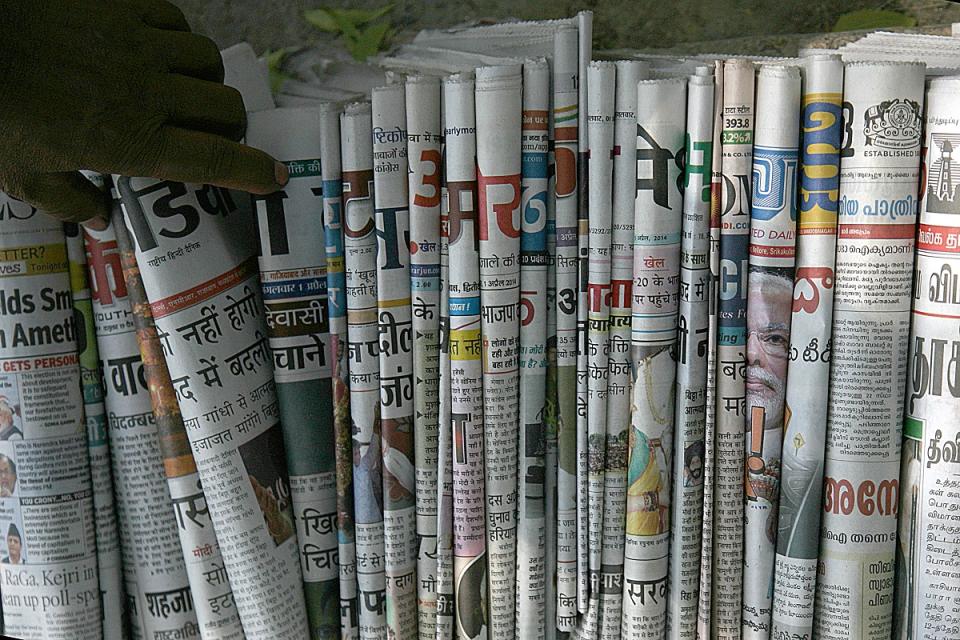One Month After Hyderabad Rape Case, A Look At How Media Can Be Sensitive In Reporting Sexual Violence

As the decade comes to an end, India is dealing with the aftermath of the gang-rape and murder of a young woman in Hyderabad last month. Her body was found burnt, and gruesome images of the crime were circulated on social media, along with her full-name and real photographs. And it did not end there. Several anchors were asking for immediate action against the culprits from their studios, questioning the government, and asking the entire ‘nation’ to come together – in rage. One news anchor even cried on screen.
Amidst all that, a few Indian media houses received notifications from the Delhi High Court after a public interest litigation (PIL) was filed, seeking action against certain media houses for revealing the identity of the victim and the accused individuals.
This comes in the backdrop of the Nipun Saxena Case judgement of 2012, where the Supreme Court had laid out clear instructions regarding the identity of rape-victims. The apex court had then said:
“No person can print or publish in print, electronic media, social media, etc, the name of victims, or in a remote manner, disclose any facts which can lead to the victim getting identified and which can make her identity known to the public at large.
In cases where the victim is dead or of unsound mind, the name of the victims or her identity should not be disclosed even under the authorisation of the next of the kin, unless circumstances justifying the disclosure of her identity exist, which shall be decided by the competent authority.”
Not the first offence
This is not the first time that the Indian media has been reprimanded for its way of covering acts of sexual violence. The Times of India’s coverage of the Hauz Khas rape case in February 2017 was vehemently questioned for its tone.
Manisha Pande, a Delhi based journalist with Newslaundry, has said that the Times Of India article was a lesson on how to not report on rape. According to her, the problem is not only with how the rape was reported, but also how identity politics is deeply ingrained in it.
In the Hauz Khas case, the survivor was from a northeastern state. The Times of India report (which is now removed) stated that she was from Nagaland while reports from NDTV and other sources claimed that she was from Manipur. Pande asks whether the media houses would apply the same technique while reporting on a rape case where the victim was from mainland India.
“..the focus of reporting a crime should be the crime, rather than identity politics or the target of the crime. This is not to say that one should not report on where the victim comes from, but highlighting the survivor’s ethnicity in the headline smacks of an attempt to draws upon offensive clichés that dog Northeastern women, especially in Delhi. The other newspapers show how this aspect should be reported. The Hindu and HT mentioned that the woman is from the northeast in their copy but did not highlight it in the headline,” she writes. She adds that several details in the story like that the woman was returning from an evening of “pub-hopping” add to the tendency of victim blaming.
In another example, while reporting on the Park Street rape case in Kolkata in 2012, DNA revealed the name of the victim and added that the crime was carried out while the victim was on her way back from a “nightclub”. Details like this can only ‘damage’ the victim as India’s largely patriarchal society already looks down upon women who are independent and can make their own choices.

Rape myths
Media coverage of rape has little to do with sexual and gender-based violence and more to do with ‘rape-myths’, as per a study. ‘Rape-myths’ are prejudicial, stereotypical and false beliefs about rape, victims, and rapists. Although its origin cannot be directly attributed to the media, this study finds that in the stereotypical constructions of sexual violence in the community, the media plays an active role. Scholars from the University of Bristol, UK, also found in their study that media articles contributed to the reproduction of such “rape-myths” that blame the victim while reducing the perpetrator’s culpability.
In India, post the infamous Delhi gang-rape case of 2012, the media has covered several cases of sexual violence. In fact, there has been a rise in reported cases. However, if you thought they’d get better at it, you are wrong.
While reporting on a Malayalam actor’s abduction case in 2017, Kairali TV, a Malayalam news channel associated with the ruling CPI(M) in Kerala, aired details of the case and insinuated a relationship between the driver and the victim. The TV channel was later chided for its coverage with many calling it “insensitive”.
A senior editor with more than decade’s experience in journalism, requesting anonymity, said that before publishing any content related to sexual violence, editors should ensure that the headline and specific terms describing the victim are sensitive.
This person added, “For instance, the victim’s place of work/residence or personal history (especially in the context of marriage/sexuality) should be actively avoided in a news report. Talk more about the accused/criminal(s); they are the ones to watch out for.”
Reportage from a gendered lens
The Global Media monitoring report in 2015 states that women make up only 24 percent of the persons heard or read about or seen in newspapers, television and radio news. In India, where men outnumber women by 4:1 ratio, the news discourse is dominated by men, as found by a UN study.
Anirudh, a Bengaluru-based activist and member of human rights NGO Solidarity Foundation, says that the focus of media reports on sexual violence should be on how the perpetrator has committed the crime. “Reports on rape should give context of the perpetrator instead of giving context of the victim. The reportage should reflect the fact that under no context is rape justifiable,” Anirudh added.
Details like what the victim was doing, where she was, and who she was with, holds no significance in the media coverage of the case. Unless it is directly linked to the perpetrator(s), these are just details used to sensationalise and clearly implies what the reporter is trying to get you to look at – not the crime only but “look what made it happen”, typical of the rampant victim-blaming culture we live in.
Kaustubh Pandey, a Delhi-based journalist, opines that the sheer need to sensationalise and to show that one is angry about certain stories makes it a case of blatant and gross violation of basic journalistic practices in the Indian media.
As the fourth pillar of Indian democracy, the media will always have a major role to play in the evolution of India. Here is hoping that sensibility and sensitivity can walk together with ethics and integrity as well.
(With inputs from Athira Nair)


